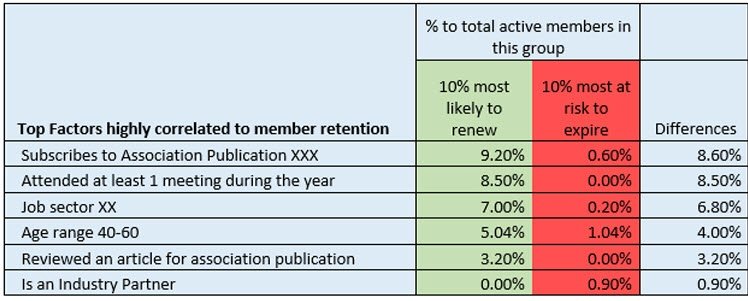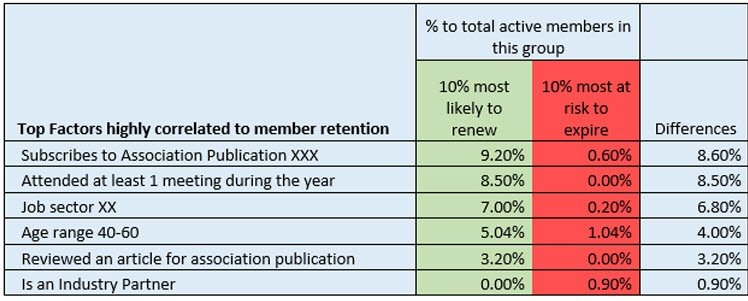If your association is on a calendar year renewal, t’s that time of year again: MEMBERSHIP RENEWALS! You have sent invoices to your members and now wait for the revenue to flow. You’re worried because the past 2 years have seen a decline in membership. And early next year, your staff will start reaching out to those who have not paid, spending considerable time following up to secure the renewal. Wouldn’t it be great if you had a crystal ball and could identify those members most at risk to NOT renew? You could begin identifying reasons they might leave and reach out to them before they do! Think about how, over the next year, if you knew which factors could be correlated to those members most likely to lapse and which factors are correlated with those member most engaged, you could begin to tailor your marketing, content, and meetings to attract more of your best members and keep those who might otherwise leave!
Guess what? Predictive analytics can do this for you. Here’s how it works:
- Collect all the data you have on your current and past members. And not just their membership history, but many types of data such as event registration, Google Analytics, email click-throughs, publications, anything that signifies engagement.
- Create a data file which links all the activities to each of these individual people or organizations (both members and past members).
- Apply statistical modeling techniques to the file which produces an equation of those factors that are correlated to the behavior of renewing membership.
- Score your current members using this equation.
- Rank order your current members by their new score.
- Divide your current members into 10 groups (could be 5-20, depending on the size of your membership).
- Now you have segmented your membership into 10 groups that range from LEAST likely to lapse to those MOST at risk for leaving.
- Apply descriptive statistics on each of the important factors for each of the 10 groups.
- The result: you have a list of those members at risk complete with a profile as well as a list of those best members complete with their own profile.
For example:
Association XX went through the steps outlined above and six factors were found to be highly correlated to membership retention. Look at the profile differences between those members most likely to be retained and those most at RISK of not being retained:
Now you have not only a list of members in each group, but an understanding of their customer profile. This type of information allows you to be proactive in member retention efforts! You can change the future and you can better forecast what will happen next year. Best of all you can increase revenue and decrease expenses at the same time.




